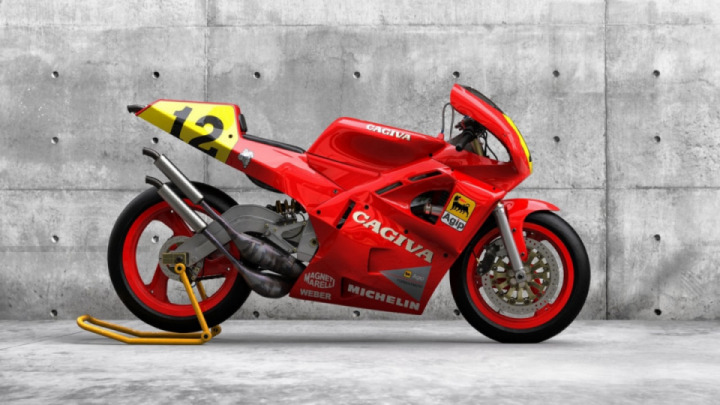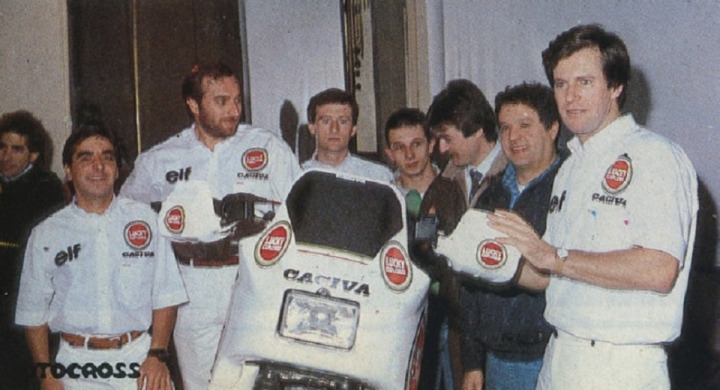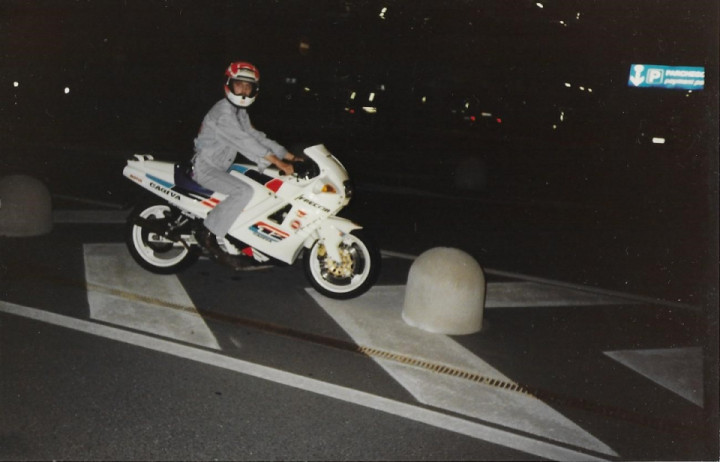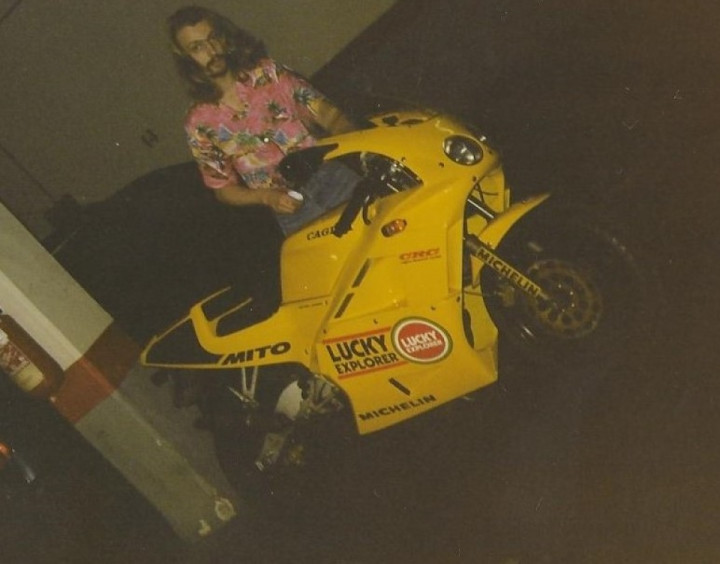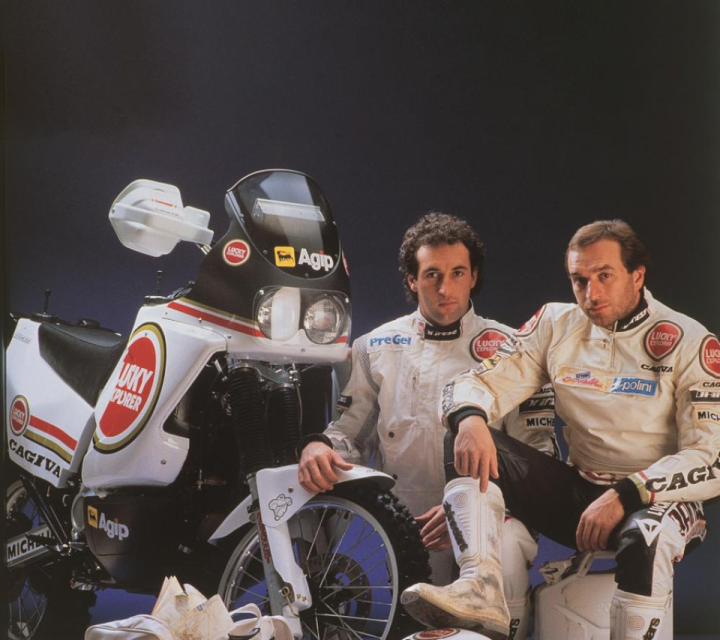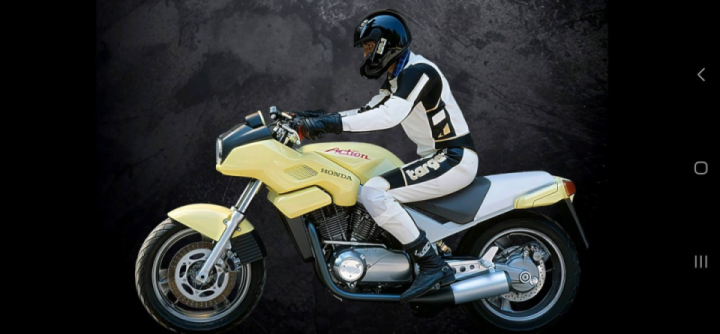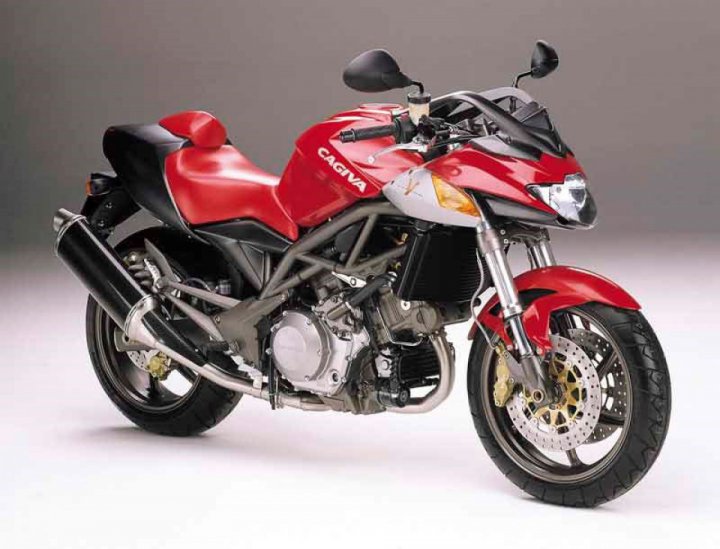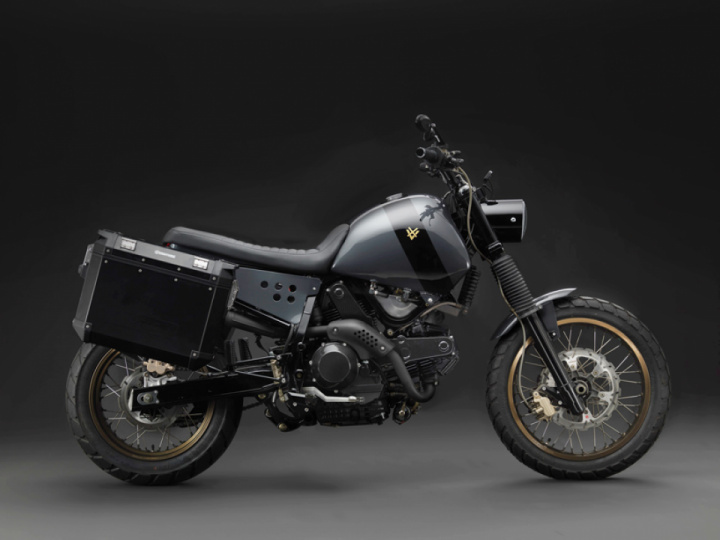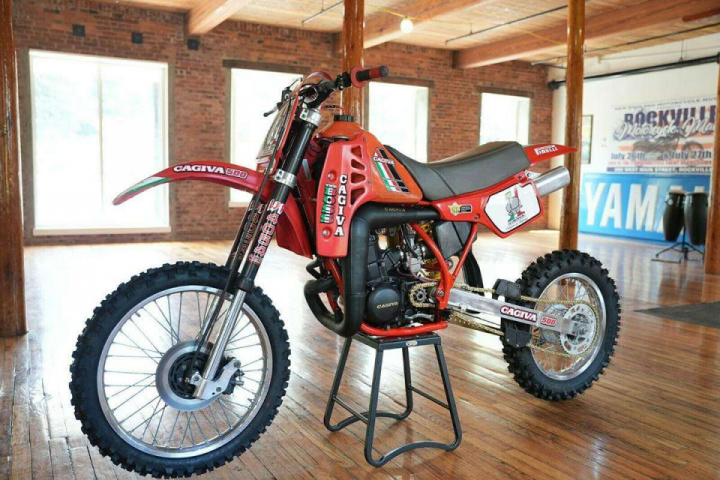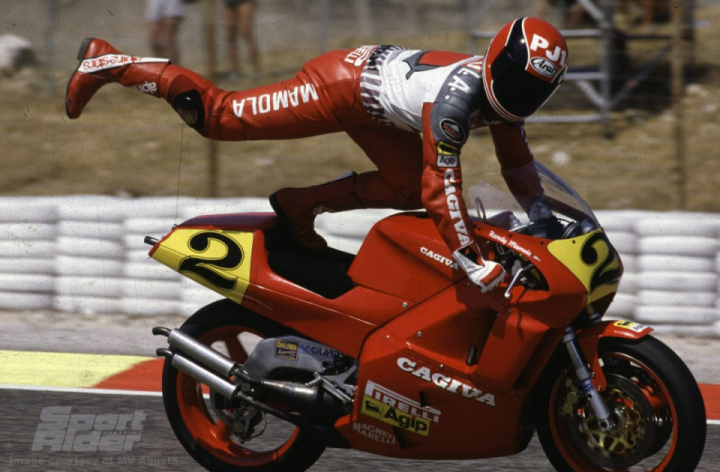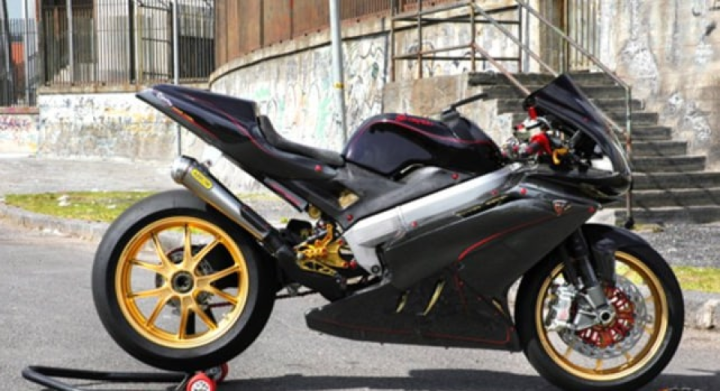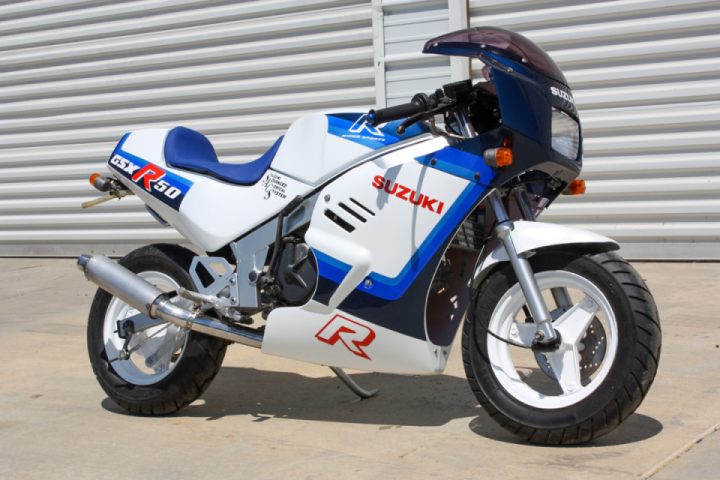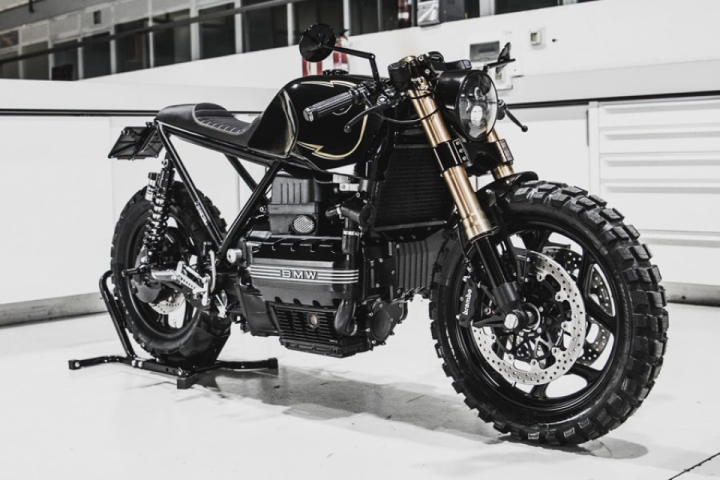1986 Cagiva GP500 Tipo C10
The 1980s were exciting times for 500cc GP racing, when names like Spencer, Gardner, Lawson, Rainey, Mamola and Schwantz battled for supremacy on ferocious, over-powered two-stoke machines that would spin their tyres and high-side their riders at the tiniest provocation.
Founded in 1950, Cagiva started making motorcycles in 1978. A newcomer attempting to challenge the dominance of the Japanese factories in the 500cc World Championship was hugely ambitious, but during the early/mid 1980s Cagiva developed a series of 500cc transverse and square four two-stroke GP racing machines. However, with technical assistance from Yamaha, 1985 saw the arrival of the C10 version with a new twin-crankshaft 90° V4 two-stroke motor housed in an alloy beam frame closely resembling that of Yamaha’s Deltabox design. The C10 was first tested by Marco Lucchinelli and Virginio Ferrari at Alfa Romeo’s proving ground at Balocco on 11th May 1985. It was subsequently raced without notable success by Lucchinelli and Ferrari, neither of whom were particularly enamoured with the new bike. So, in August 1985 Cagiva invited Kenny Roberts to Misano to test the machine. In two test sessions at each end of the month and trying out four different engines, Roberts put in some very competitive lap times and was impressed, but he also made recommendations to improve the C10’s performance.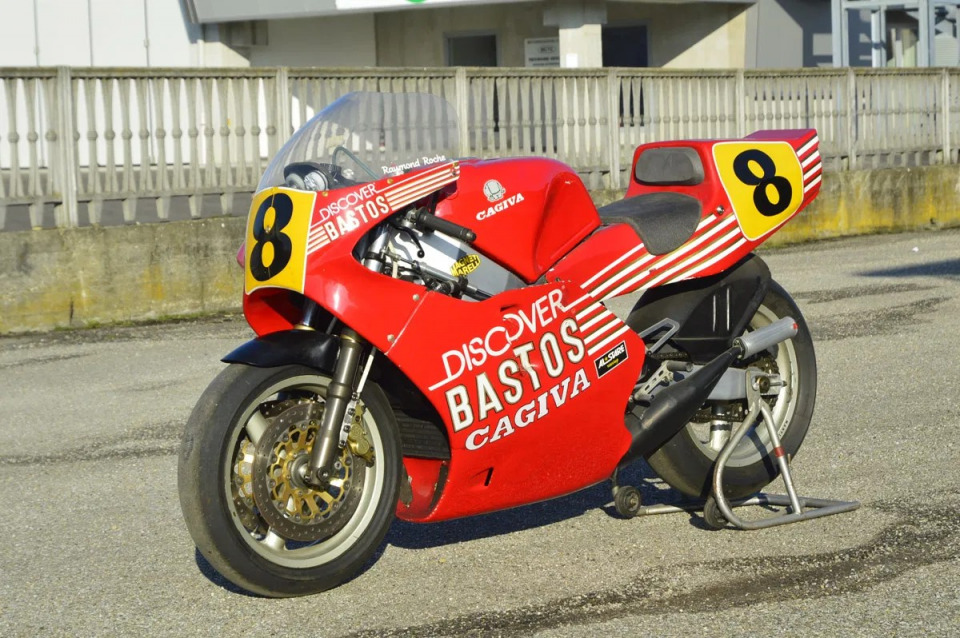
Spaniards Joan Garriga was signed to ride the updated C10 for the 1986 500 World Championship season. He scored two top 10 placings – an 8th at Jarama and a 10th at Assen – and completed the championship in 17th overall. In May ’86 Lucchinelli entered the GP of Nations at Monza as a wild card on a factory C10, but crashed early on in the race while in the lead.
With a new Team Manager (François Batta, formerly the Director of Belgian football) and sponsorship from Bastos tobacco (Bastos red replacing the earlier MV Agusta inspired red/silver scheme), Raymond Roche and Didier de Radigues were signed to Cagiva for the 1987 season. Having finished 10th on an ’86 C10 at the first round in Suzuka on 29th March, records show that Roche rode chassis 14 in a pre GP test session at Jerez on 25th April, but swapped to chassis 16 for the race itself in which he came 10th.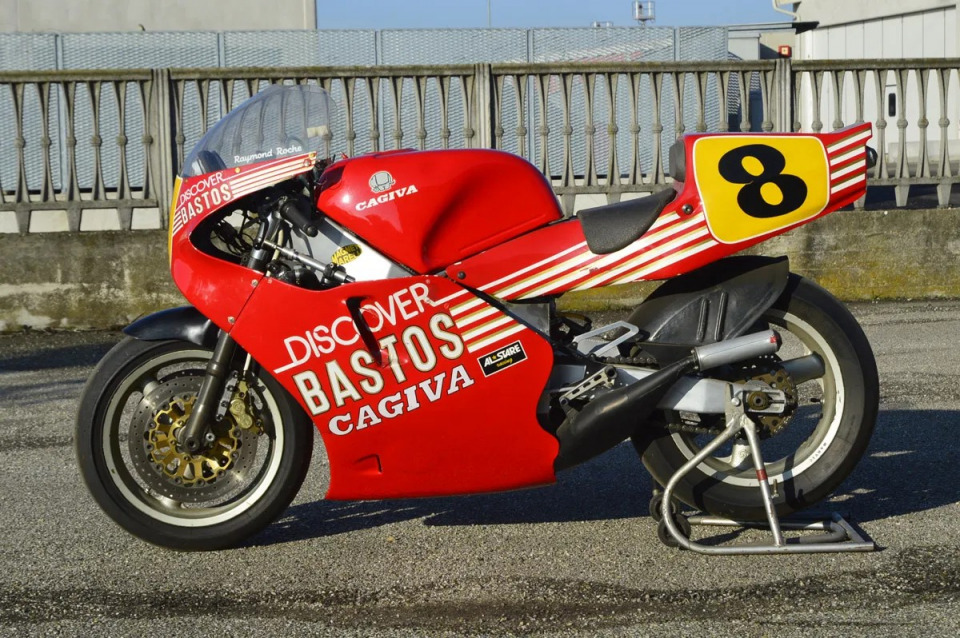
Cagiva’s replacement for the C10, the 56° V4 C587, made its debut at Monza in May ’87, with Roche finishing 9th. Randy Mamola subsequently gave Cagiva its first 500 GP podium at Spa in ’88, while Eddie Lawson scored the factory’s first GP win at the Hungaroring in ’92. Cagiva-mounted John Kocinski also a won a GP in ’93 and ’94 and finished 3rd in the ’94 championship, 1994 being Cagiva’s final season.
Pics credit: Cagiva GP team 1986 | Coys of Kensington Classic Car Auctions
 Follow
4.9K
Follow
4.9K


